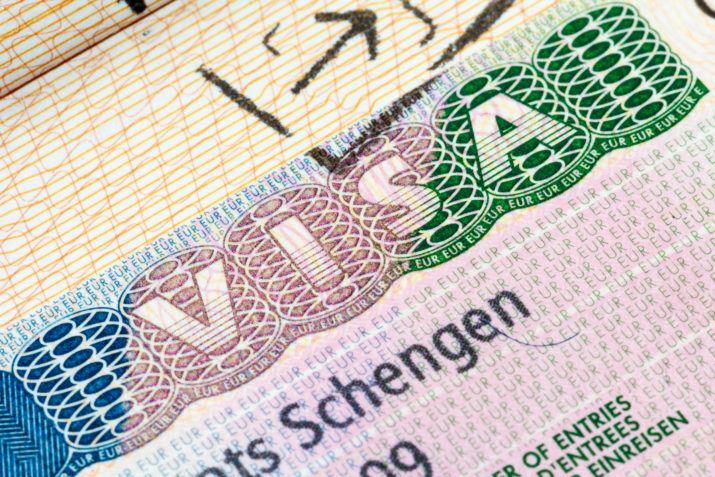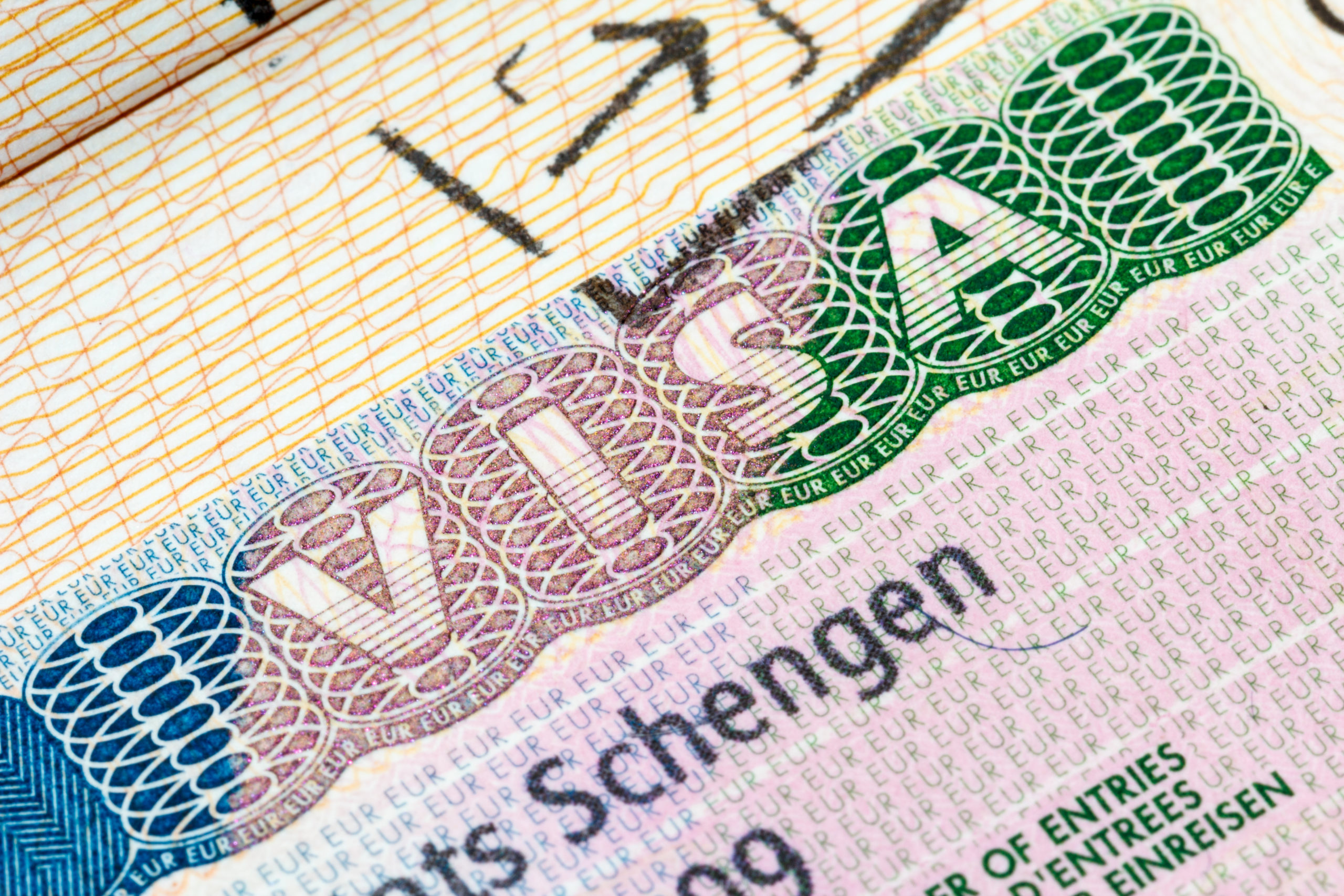
The Externalization of Border Control and the Dynamism between the European Center and the European Peripheries

In spring 2021, events in the Spanish exclave of Ceuta dominated international headlines for a few days, presumably due to an upset over the behavior of the Spanish government in the context of the Western Sahara conflict in which the Moroccan government loosened border controls with the European Union. As a result, thousands of people arrived in Ceuta from Morocco. Initially, the local authorities seemed overwhelmed by the situation, but migrants were quickly deported back to Morocco and the Spanish side of the border was soon massively reinforced. Shortly after, Morocco also began to control the border again according to the criteria agreed with Spain and the European Union. The agreement between the European Union and Morocco is part of the European externalization policy in the field of border security and migration.
For decades, the externalization of border control and thus the externalization of combating irregular migration at whom border control is directed has been the central means of European border and migration policy. It is at the external border of the European Union where the dynamism between the European center and the European peripheries manifests.
The Dynamism of Europe
The “Dynamism of Europe” is a theoretical approach developed by the Austrian sociologist Georg Vobruba[i] to explain the integration and expansion of the European Union in the pattern of concentric circles. According to this approach, the development of the European Union is decisively dependent on the interactions and interdependencies between the center and periphery of Europe. The center of the European Union is formed by politically and economically stable states. Around this “affluent core,” peripheries are integrated at different levels. The further a state is from the center, the higher the prosperity gap compared to the core. The different zones of prosperity are separated from each other by borders with different degrees of permeability. A “political exchange ratio” has emerged between the center and the periphery; while the periphery undertakes to shield the center from cross-border problems—thus to act as a buffer zone—the center promises support, free movement of persons, and opportunities to participate in its prosperity. The pattern of concentric circles ensures the preservation of the status quo for the states of the center and development potential for the states of the periphery. Vobruba’s theory can be specified by an important distinction, namely that between the inner European and the outer European periphery. These two peripheries diverge considerably from each other in their interests and interactions with the center and therefore require a specific consideration.
Initiated in the Schengen Agreements (from 1986) with the abolition of checks at their common borders, the European Union has taken a significant step towards integration, which has a direct impact on the dynamism between the center and the inner European periphery. Cross-border migration to an inner European periphery state now potentially means entry into all states of the European Union. The free movement of persons within the European Union has therefore led to an increased interest of the European core-states in controlling the events at the external borders. Along with this, the stability of the outer European periphery continues to gain in importance.
The free movement of persons can be seen as the starting point of the European border regime. It correlates with the externalisation of border control and the establishment of the European Border and Coast Guard Agency Frontex. In terms of the theory of the dynamism of Europe, these developments can be identified as mechanisms to maintain the buffer zone within and around the European Union. In the European border regime, the pattern of concentric circles means the center externalizes border control tasks to the member states with European external borders and the external border states and the European Union externalize border control tasks to the periphery outside the Schengen borders.
Externalisation from the center to the inner and outer European periphery
The externalization dynamism between the center and the inner European periphery can be exemplified in the southern European border state of Italy. On the one hand, the member states of the European core and the European Commission support the country in controlling its external borders. This is mainly done through the European Border and Coast Guard Agency Frontex, which has been continuously expanded since 2005. Frontex is currently conducting Operation Themis in the Central Mediterranean Sea to relieve Italy in border control, surveillance, and search and rescue. Moreover, the European Union has been implementing the so-called Hotspot Approach since 2015, which is to be understood as assistance to Italy and other external border states in the registration and identification of migrants by Frontex and other European agencies.[ii]
On the other hand, the states of the European center have established mechanisms such as the Dublin Regulation, which assign responsibility for asylum applications to the first country of entry and thus externalise it mainly to Italy and the other inner European periphery states.[iii] Responsibility for border security is also clearly externalised to these states, as is also repeatedly made clear at the discursive level; political bodies of the European center alternately appeal to Italy’s responsibility for effective border control and compliance with rules in force or threaten to reject refugees to Italy or to reintroduce border checks.[iv] “Italy must sort out its problem itself” and “solidarity will only emerge if the member states at the EU’s external borders—with support from the EU budget—take all the necessary legal and financial means to strengthen the surveillance of the external borders” are just two quotes from German and French interior ministers from recent years that illustrate this attitude towards Italy.[v]
In both parts of the externalization dynamism between the center and the inner European periphery—support and transfer of responsibility—it is essential that combating or managing irregular migration is to take place on Italian territory or in Italian waters. The problems of the periphery are to be solved in the periphery so as not to endanger the stability of the European center.
For Italy, this means that the border is not only a national border but a European border too; the border is doubly coded, as Vobruba theoretically describes it. Italy accepts the additional supranational tasks in border control, but demands comprehensive support from the states of the center and to recognzse the efforts of the external border states.
It is therefore not only the European external border states that have a strong interest in establishing an additional buffer zone against irregular migration in a further concentric circle, namely in the neighborhood of the European Union. Also, with regard to this outer European periphery, the principle is to shift border control tasks forward. These are to take place outside European territory, so that irregular migrants do not even get close to their destination. To this end, both the European peripheral states and the European Union have concluded a series of agreements with third countries. Research roughly distinguishes between two forms of externalised border control: the outsourcing of border control tasks to third countries and the implementation of border control by European border guards on non-European territory[vi]. In the first case, third countries in the European neighbourhood are mandated and supported to prevent migrants from entering the European Union irregularly by controlling the borders to the European Union according to European standards and by establishing detention centers. The second case includes all measures of migration control in which the European Union, although shifting forward the control function, continues to act as the central actor of implementation. Here, both legal entry procedures (e.g. visa policies), and physical control measures aiming to prevent illegal entry are externalised to the non-European territory.
To illustrate the comprehensive bilateral agreements with third countries, it is enough to refer to Italy’s cooperation with Libya. Italy had concluded a series of comprehensive agreements with Libya in the early 2000s, culminating in the friendship treaty signed by Berlusconi and Gaddafi in 2008. This included very extensive cooperation to combat irregular migration. When Gaddafi’s regime collapsed, the instability of the country became a central problem of Italian migration policy, which was followed by the laborious reconstruction of the agreements with Libya.[vii]
At the European level, Frontex is equipped with comprehensive powers to implement third-country agreements. The Agency cooperates with the direct outer European periphery, but also with other third countries in the form of operational cooperation (e.g. information exchange, trainings, joint operations such as in the Africa Frontex Intelligence Community), in working arrangements (e.g. with Belarus, Morocco or Turkey), in technical assistance projects (e.g. in North Africa) or within the framework of the Global Approach to Migration and Mobility. Frontex also arranges and implements readmission agreements for the Member States of the European Union. For their cooperation and support the third countries receive visa facilitation, import facilitation or benefits in the context of development policy from the European Union. However, some of the agreements also contain sanctions.[viii]
As an intermediate stage of the externalization circle in the dynamism of Europe, it can also be observed that the inner European peripheral states outsource border control tasks and the management of irregular migration to peripheries within their own states, namely to islands (or enclaves in the case of Spain). Migratory movements are directed to them and the authorities on the islands are often (initially) given sole responsibility for the care of the migrants. The governments of the border states have been demanding more support from the European Union for years, so the local authorities on Lesbos, Lampedusa or Ceuta are appealing to their central governments to relieve them. However, the latter not infrequently use the exacerbations at the territorial edges of the European Union as a means of exerting pressure on the European center.[ix]
Fragile buffer zones
It is not surprising that the principle of externalizing border control tasks in the dynamism of Europe is fragile. If a concentric circle is no longer able or willing to maintain its buffer function, this results in immediate stability problems for the European center—in the form of irregular migrations via third countries or the inner European periphery and the associated consequential problems (such as protests among the population). When the buffer zones disappear, the external border becomes unmediated for the affluent core due to the free movement of persons within the European Union.
In practice, the buffer function of the European neighborhood in North Africa has recently been severely shaken, not only in the short term as in Ceuta, but also structurally in the context of the so-called Arab Spring. With the collapse of the regimes, the gatekeeping arrangements with the European Union also lost their validity. So, the regime collapses led to a dysfunction of the outer European periphery. This in turn created conflicts between the center and the inner European periphery and triggered a “migration crisis”—perceived in the political and public discourse within the European Union—and in its immediate aftermath a “Schengen crisis,” i.e. a crisis of the free movement of persons in the European Union. The states of the European center first tried to avoid the problem by temporarily reintroducing border controls with the external border states, but then quickly revitalised the externalisation mechanisms. The external border states also massively pushed the externalization policy, as the example of Libya shows. Particularly prominent at the European level is the “EU Turkey Statement” from 2016, in which the payment of a total of 6 billion euros for the support of Syrian refugees in Turkey, the expansion of Turkish migration management, the establishment of refugee reception centers in Turkey and returns of irregular migrants apprehended in Greece were agreed.[x] This gatekeeping arrangement has already been broken several times by the Turkish government.
The externalization policy in the field of border security and migration seems to have no alternative for the European Union—despite the massive negative experiences in recent years, the de facto dysfunction of the periphery and despite the obvious dependencies on partners with very questionable human rights records. The European Border and Migration Management System is built on externalisation. And this, in contrast to the fragility of the externalisation dynamism, is indeed surprising, because there would be numerous alternatives to deal with those seeking protection as a state or union of states.
Isabel Hilpert holds a doctorate in social sciences and works as advisor of the director at the Leibniz Institute for Regional Geography (Leipzig, Germany). Her research interests are Border Studies, Nation Statehood and Sociology of Europe.
References
[i] Vobruba, G (2005) ‘Die Dynamik Europas’, Wiesbaden: Springer VS.
[ii] see Frontex (2021) ‘Operation Themis (Italy)’ https://frontex.europa.eu/we-support/main-operations/operation-themis-italy-/.
[iii] see Triandafyllidou, A (2014): ‘Multi-levelling and externalizing migration and asylum: lessons from the southern European islands’, Island Studies Journal, 9 (1).
[iv] see Hilpert, I (2015): ‘Grenzen europäischer Grenzen’ In: Preunkert, J/ Vobruba G (Eds.): Krise und Integration.Wiesbaden: Springer VS.
[v] first quote: Hans-Peter Friedrich, German Minister of the Interior, 2011; second quote: Joint statement by the German and French Ministers of the Interior Thomas De Maizière and Bernard Cazeneuve, 2015; both quoted in my study Hilpert, I (2020): ‘Die doppelt codierte Grenze und der Nationalstaat in Europa’. Wiesbaden: Springer VS.
[vi] see e.g. Gaibazzi, P et al. (2017): ‘Introduction’ In Ibid.: EurAfrican Borders and Migration Management. New York: Palgrave Macmillan.
[vii] see Morone, A (2017): ‘Policies, Practices, and Representations Regarding Sub-Saharan Migrants in Libya’ In: Gaibazzi, P et al. (Eds.): EurAfrican Borders and Migration Management. New York: Palgrave Macmillan.
[viii] for an overview on Frontex: Kalkman,, J (2020): ‘Frontex: A Literature Review’, International Migration, 59 (1);
on the current Frontex operations: Frontex (2021) https://frontex.europa.eu/we-build/other-partners-and-projects/non-eu-countries/.
[ix] see Cuttitta, P (2014): ‘Borderizing the Island’, ACME: An International Journal for Critical Geographies, 13 ( 2).
[x] see Yildiz, A (2016): ‘The European Union’s Immigration Policy: Managing Migration in Turkey and Morocco’. London: Palgrave Macmillan.




